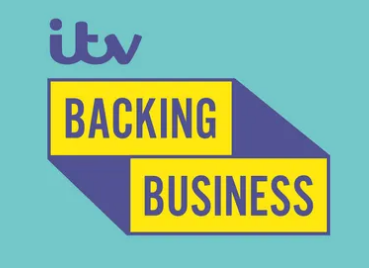
Television is endlessly versatile and flexible. It has the ability to fulfil a variety of tasks. Here are just some of the TV advertising objectives often find on communication briefs.
Repositioning Brands
Changing perceptions about a brand is one of the hardest tasks an advertiser has to address. They have to erase current association, beliefs and feelings about a brand and replace them with new ones. This task demands a medium that can create powerful new associations, like TV.
Sponsorship can be a highly effective and subtle way of repositioning a brand. The implicit associations with a programme brand can transfer to the brand successfully when more overt claims in spot advertising might be rejected. Bailey’s Irish Cream famously transformed itself into a very sensuous drink through its long-running sponsorship of Sex in the City.
Changing Behaviour
Not all advertising is about consumption. Sometimes it’s about trying to persuade people to change what they do. Some behavioural change campaigns have to challenge long-term habits and even chemical addictions. There have been are many high-profile public health and safety campaigns, from seat-belt wearing to anti-smoking which used the emotive power of TV to get through to people who would probably have rather not seen it. It can also recruit families and friends to the cause.
But changing behaviour is also something that commercial brands need us to do. Ariel’s ‘Turn to 30’ used TV to get us all to turn the dial down, and East Coast trains used TV to grow customer sentiment and increase online sales.
One media planning technique relevant for behavioural change is frequency and ubiquity. Topping and tailing within ad breaks, or using consecutive breaks is worth consideration. This can work particularly well if the first message is the motivational one and the second gives details of where to get help and advice and is an excellent way of providing both the inspiration and the practical help to make someone change their life for the good.
Generate Response
Television is highly effective at generating a response, either directly to a retail site or by making response advertising in other media more effective.
Direct response
Everyone knows that retailers use TV to maximise the success of any promotion: seasonal sales, product offers, store openings etc. But brands can also use TV’s ability to drive people to buy directly on or off-line. Since the ’80s TV ads have been carrying phone numbers, and a whole science has developed about how to stimulate phone response efficiently within the capacity of a call centre. Direct financial brands were largely built on TV’s ability to generate leads and customer acquisitions.
But with the growth of the internet, brands are also encouraging response to their own websites by including URLs and interacting with customers through social media links. Social media has become an increasingly widespread and integral part of communications planning. Thinkbox have examined the link between TV and social media in several studies, including our work with Twitter, which explored attitudes towards social media elements in TV advertising campaigns.
In an age of multi-screening, Viewers very naturally use search engines to find brands they hear about through TV, though clearly it is better for the advertiser to encourage use of URLs. Strong brands made famous through TV are more likely to be found through natural search rather than sponsored links. However there is an art to maximising the search response to TV campaigns. People search not just for brand names but for the strap-lines, songs and actors they have seen on TV. So it’s worth making sure your website reflects these elements of the TV ad so you capture all the interest TV has generated. Now more and more online brands are investing heavily in TV. In fact, three of the top ten brands on TV are online brands.
The face of response advertising has changed dramatically within the last decade. The picture is now hugely complex and detangling the impact and role of each media on response is a constant challenge. Therefore, we commissioned GroupM to analyse the response effects of a wide range of channels in our ‘TV Response, new rules, new roles’ study. These included both brand and direct response TV, radio, print, outdoor, direct mail, affiliates, online display and paid online search.
Driving response through other media
Other media, particularly print, online and DM, offer great response mechanisms. They are often called ‘activation media’, because the awareness and consideration that TV has created can be activated by them. The danger is that TV’s contribution to the response from these other media is misattributed. ‘TV Response, new rules, new roles’ also uncovered TV’s role in driving response indirectly.
Demonstration
One of TV’s greatest strength is its ability to demonstrate. The ability to see exactly how the lawnmower cuts, the vacuum cleans, the car seats fold down etc. is extremely powerful. Sometimes a viewer needs to see a product in action in order to understand fully its benefits. It is the power of the moving image accompanied by sound that makes TV advertising so powerful. Demonstration shows viewers how to consume a new product. Magners created a fashion for drinking cider over ice through the delicious and thirst-inducing images of clinking ice-cubes.
Television advertisers have been using demonstration as an aid in their commercials for a long time. For example, we see two white shirts, one sparkling after being washed in the advertised brand and the other rather less so.
Customer Retention
It is much easier and cheaper to retain existing customers than to go out and find new customers. Hence, customer retention is a key factor for any brand/company. Therefore, it is really important to remind your existing customers why they love your brand. Sending direct mail advertising along with the monthly bill as part of their customer retention programme is an efficient way to communicate with customers, but it’s not enough.
A television campaign is capable of making a customer feel proud of ‘their’ brand, remind them why they bought into the brand in the first place and of all the positive elements of the brand and keep them feeling positive and warm about their choice of brand. Most of all it protects them against the advances of all those other brands who want to get their hands on your customers.
Launching Brands
TV is without doubt the most effective medium for launching brands. It combines the scale and reach that a new brand needs with impact and persuasiveness. No other medium can offer both these qualities.
Awareness is another way of saying fame. Pretty much everyone watches TV. Commercial TV reaches 98% of individuals every month (Source: BARB). There is much talk of fragmentation, but in fact TV campaigns can build coverage as rapidly as they ever did with the same weight of ratings.
But it’s not just about fame and awareness. It’s the nature of the TV experience that gives new brands a hold on the emotions and long-term memories of viewers. Neuroscience has now proved that moving images with sound particularly stimulate our emotions and our long-term memory. Advertising viewed in a relaxed state is not filtered through our cognitive brains, and so avoids the conscious screening and rejection that more rational media exhibit. TV advertising creates rich and deep emotional connections and positive associations by firing synapses that eventually hard-wire. TV advertising effectively creates the place in the brain where a new brand can live.
Integration and story-telling
People lead multi-media lives. We don’t expect TV to be the only medium you use. But all the evidence suggests that putting TV at the heart of an integrated campaign will make every other medium work better.
Story-telling is the most powerful method of human communication; it’s just as true for brands as it is for religion or education. TV campaigns can establish a narrative, perhaps with a cast of characters, which will then resonate when seen in more static media.
TV establishes key elements of the brand – logo, strap-lines, music etc. – in a rich media context so that when any individual component is used in another medium it can evoke memories of the fuller TV communication. Using music or characters from TV ads in radio can provoke a visual memory, as long as it’s there. Similarly static print and poster campaigns are more impactful and make better sense after being established through moving images. For example, a recent Comparethemarket.com campaign had a radio advert featuring Aleksander the Meerkat. If you hadn’t seen the TV ad, the radio campaign would have made little sense.
Programme sponsorship and branded content offer an excellent integration vehicle for brands. A well exploited sponsorship can take the programme associations into all aspects of a brand’ marketing; PR, on-pack, in-store, events, staff communications, customer promotions as well as advertising in other media.
To learn about some of the creative campaigns that we have been a part of do get in touch, and for greater information on data pertaining to TV advertising there is no better source than Thinkbox – the marketing body for commercial TV in the UK, in all its forms. It works with the marketing community with a single ambition: to help advertisers get the best out of today’s TV.


